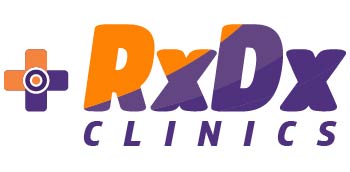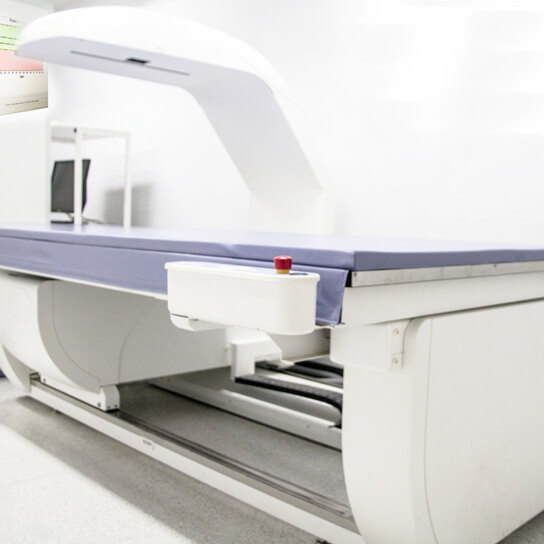
Key Highlights
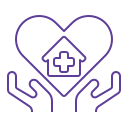
Benefits & uses
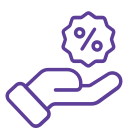
Scan Process

Report Include

Tests & Pricing
FAQs

DEXA Scan (Bone Density Test)
at RxDx Clinics – Whitefield & NM Medical, Domlur, Bengaluru
Quick, painless Dual-Energy X-ray Absorptiometry (DEXA) scans to diagnose osteoporosis, assess fracture risk, monitor bone health, and analyse body composition.
At RxDx Clinics, Whitefield, we use the advanced FDX Visionary-DR scanner from FUJIFILM/DMS; at RxDx–NM Medical, Domlur, we use a GE DEXA scanner. Both centres provide accurate, low-radiation scans interpreted by experienced radiologists.
Key highlights

Low radiation exposure

10–20 minute procedure
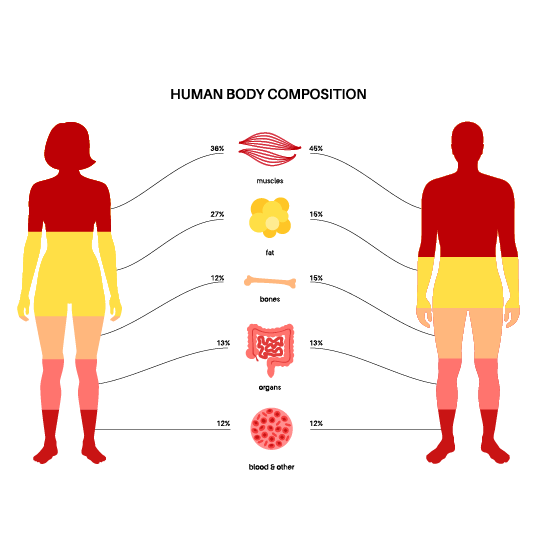
Body composition & fat distribution insights

Conducted and reported by qualified radiology experts
Why consider a DEXA scan?
A DEXA scan is the gold standard for bone density testing and body composition analysis.
Benefits & uses
- Detect osteoporosis early to reduce fracture risk
- Track bone mineral density (BMD) changes over time
- Assess effectiveness of treatment for osteoporosis/osteopenia
- Evaluate fat and lean mass distribution for metabolic health
- Recommended for:
- Post-menopausal women and older adults
- Individuals with frequent fractures or family history of osteoporosis
- Patients on long-term steroid therapy
- Athletes at risk of stress fractures
- Those with chronic illnesses affecting bone health
Why it’s preferred
DEXA uses two low-dose X-ray beams to distinguish bone from soft tissue, providing precise, repeatable results with much less radiation than standard X-rays.
What happens during the scan?
A DEXA scan is the gold standard for bone density testing and body composition analysis.
Before the scan
- Wear loose, comfortable clothing without metal zippers or buttons
- Remove jewellery, belts, and other metal accessories
- Avoid calcium supplements 24 hours before (unless advised otherwise)
- Inform the team if you are pregnant, have metal implants, or had contrast scans within the past week
During the scan
- Lie on a cushioned table while a scanning arm moves overhead
- No injections or dyes required
- Painless; typically completed within 10–20 minutes
- You’ll be asked to breathe normally and remain still for accuracy
After the scan
- Resume normal activities immediately
- A radiologist analyses your study; your doctor reviews findings and next steps as needed
What does the report include?
T-score
Comparison with healthy young adults (to diagnose osteopenia or osteoporosis)
Z-score
Comparison with people of the same age, sex, and ethnicity (useful for atypical loss patterns)
Fracture risk assessment
For hip, spine, and wrist
Body composition metrics
BMI, Lean Mass Index, android/gynoid fat distribution, visceral vs subcutaneous fat (VAT/SAT), Basal Metabolic Rate (BMR), and Appendicular Lean Mass (ALM) for sarcopenia evaluation
Areas commonly scanned
- Lumbar spine (lower back)
- Hip / femur (proximal femoral bone)
- Forearm / wrist
- Whole body (for complete composition analysis)
DEXA Scan Tests & Pricing – Whitefield & Domlur
Explore our comprehensive list of DEXA scan services available at RxDx Clinics – Whitefield and NM Medical, Domlur, Bengaluru.
Use the table below to learn about each test, including what it measures, when it is recommended, and transparent pricing. You can search or filter by category (bone density, metabolic health, paediatric) or specific keywords like hip, spine, or whole body to quickly find the assessment that suits your needs. All scans are performed with advanced DEXA technology by experienced radiology professionals.
DEXA Scan Services & Prices
| No | Category | Test | Explanation to the Test | Price (₹) |
|---|---|---|---|---|
| 1 | Bone Density & Fracture Risk Assessment | DEXA Hip (Single / Dual / Comparison) | The hip is one of the most common sites for osteoporosis-related fractures. A single hip scan measures bone density in one hip, while a dual hip scan checks both hips for accuracy. Hip comparison is useful when one hip is affected by arthritis, surgery, or implants. | 1,500 |
| 2 | Bone Density & Fracture Risk Assessment | DEXA Spine (Standard L1–L4) | The lumbar spine (L1–L4) is highly sensitive to early bone loss. Measuring bone mineral density here is considered the gold standard for diagnosing osteoporosis and monitoring treatment response. | 1,500 |
| 3 | Bone Density & Fracture Risk Assessment | DEXA Scoliotic Spine | In patients with scoliosis (curved spine), standard bone density results may be misleading. This mode adjusts for spinal curvature, giving a more reliable and accurate assessment. | 1,750 |
| 4 | Bone Density & Fracture Risk Assessment | DEXA Lateral Spine BMD | Unlike the standard front-to-back view, this test measures bone density from the side view of the spine. It helps detect vertebral thinning earlier and is valuable in identifying silent fractures. | 2,000 |
| 5 | Bone Density & Fracture Risk Assessment | DEXA Forearm | Measures bone density in the radius and ulna (forearm bones). Especially useful when hips or spine cannot be scanned (e.g., hip replacement, arthritis). Also valuable in metabolic conditions such as hyperparathyroidism. | 1,000 |
| 6 | Bone Density & Fracture Risk Assessment | DEXA Hip + Spine Combination | Since bone loss may not occur uniformly, scanning both hip and spine provides a more complete and reliable picture. This dual-site assessment reduces the risk of misdiagnosis. | 2,500 |
| 7 | Bone Density & Fracture Risk Assessment | DEXA Digital Vertebral Assessment (DVA) | Captures images of the vertebrae to identify silent (asymptomatic) vertebral fractures, which are often missed in routine X-rays. | 2,000 |
| 8 | Bone Density & Fracture Risk Assessment | DEXA Orthopaedic Applications | Supports bone health evaluation in patients with fractures, joint replacements, or implants. Useful for surgical planning, monitoring healing, and deciding safe treatment approaches. | 2,500 |
| 9 | Bone Density & Fracture Risk Assessment | DEXA Morphometry | Provides detailed measurement of vertebral shapes, sizes, angles, and distances. Essential in diagnosing compression fractures, scoliosis, and spinal deformities. | 2,500 |
| 10 | Bone Density & Fracture Risk Assessment | DEXA Cobb Angle (with AP-DVA) | The Cobb angle is the standard tool for measuring spinal curvature in scoliosis. Using AP-DVA (front view of vertebrae), this ensures accurate diagnosis, progression tracking, and monitoring. | 2,500 |
| 11 | Body Composition & Metabolic Health | DEXA Whole Body Scan & Composition | Provides overall skeletal density plus a comprehensive analysis of body fat, lean mass, and muscle distribution. Also indicates fat stored around key regions. Widely used in obesity management, metabolic health, sports fitness, and performance tracking. | 4,000 |
| 12 | Body Composition & Metabolic Health | DEXA Visceral Fat Analysis | Estimates fat stored around internal organs (different from subcutaneous fat). High visceral fat is strongly associated with diabetes, fatty liver, metabolic syndrome, and cardiovascular risk. | 3,000 |
| 13 | Body Composition & Metabolic Health | DEXA Metabolic Indicators (BMI, FMI, BMR, RMR, Lean Mass Balance, Android/Gynoid Ratio) | Calculates key metabolic health indices. Helps in risk stratification, diet and fitness planning, and tailoring personalised interventions. | 1,000 |
| 14 | Specialised & Paediatric Assessments | DEXA Paediatric Bone Health | Evaluates bone strength, growth progress, and body composition in children and adolescents. Especially valuable for those with nutritional deficiencies, growth disorders, or chronic illnesses. | 2,000 |
| 15 | Specialised & Paediatric Assessments | DEXA FRAX Score (WHO Tool) | Estimates the 10-year probability of major osteoporotic fractures by combining bone mineral density with other clinical risk factors (age, gender, lifestyle, family history). | 1,250 |
| 16 | Specialised & Paediatric Assessments | DEXA Hip Structural Analysis (HAS) | Provides detailed hip geometry (HAL, FNAL, FNA, IH) to assess fracture risk beyond bone density, giving a deeper insight into hip stability. | 2,000 |
Ready to book your DEXA scan?
Call 901 409 1111 or WhatsApp 901 996 1402 to schedule your appointment at RxDx Clinics, Whitefield or RxDx–NM Medical, Domlur. You can also book online for added convenience. Our team will guide you on the most suitable test based on your doctor’s recommendation or your health needs.
Related services

Orthopaedics
Bone and joint consultations
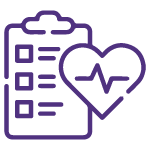
Preventive Health Checks
Comprehensive screenings by age and risk profile
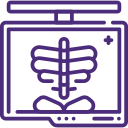
Radiology & Imaging
Advanced diagnostic imaging across modalities
Booking & locations
RxDx Clinics, Whitefield
Kundalahalli Main Road,
Vishweshwaraiah Industrial Area,
Whitefield,
Bengaluru – 560048
Timings: Daily, 8:00 am – 10:00 pm
RxDx–NM Medical, Domlur
Ground Floor, Tower A,
Corporate Block, Diamond District,
HAL Airport Road,
ISRO Colony, Domlur,
Bengaluru – 560008
Timings: Daily, 8:00 am – 8:00 pm (Sunday closed)
Frequently Asked Questions (FAQs)
What is a DEXA scan and what does the FDX Visionary-DR machine do?
They help:
- Diagnose osteoporosis and evaluate fracture risk
- Measure bone mineral content (BMC) and bone mineral density (BMD)
- Monitor bone health over time
- Analyse full body composition (BMI, fat mass, lean mass, visceral fat)
The scan is painless, non-invasive, and typically takes 10–20 minutes, providing accurate insights into bone and metabolic health.
How does a DEXA scan work and why is it preferred for bone density tests?
Why it’s preferred:
- Extremely low radiation dose (much lower than traditional X-rays)
- Highly accurate and consistent results
- Considered the gold standard for osteoporosis screening worldwide
Is a DEXA scan safe? Are there any risks?
However:
- Pregnant women or those planning pregnancy should inform their doctor before the test.
- Trained professionals always follow strict safety protocols.
Who should consider getting a DEXA scan?
- Post-menopausal women and older adults
- Individuals with a family history of osteoporosis
- People with frequent fractures or bone weakness
- Patients on long-term steroid therapy
- Those with chronic illnesses affecting bone health
- Athletes prone to stress fractures
What are the benefits and limitations of a DEXA scan?
- Early detection of bone loss and fracture risk
- Quick, painless, and non-invasive procedure
- Minimal radiation exposure (much lower than a standard X-ray)
- No fasting or complex preparation required
Limitations:
- Does not directly assess bone quality or the cause of bone loss
- Unsuitable for pregnant women due to radiation
- Results may be affected by recent contrast imaging tests or metal implants
Which body areas are scanned during a DEXA test?
- Lumbar spine (lower back)
- Hip / Femur (proximal femoral bone)
- Forearm / Wrist
- Whole body (for body composition analysis)
These areas are important as they are most prone to osteoporotic fractures (spine, hip, wrist).
What are T-scores and Z-scores in DEXA results?
- T-Score: Compares your bone density to a healthy young adult of the same gender.
- Above –1: Normal
- Between –1 and –2.5: Osteopenia (low bone mass)
- Below –2.5: Osteoporosis
- Z-Score: Compares your bone density to people of the same age, gender, and ethnicity. Useful for younger individuals or unusual bone loss patterns.
What additional information does the DEXA scan provide about body composition?
- Body Mass Index (BMI) and Lean Mass Index (LMI)
- Fat Mass & Fat Distribution (Android/Gynoid fat ratios)
- Visceral vs Subcutaneous Fat (VAT & SAT)
- Basal Metabolic Rate (BMR) – calories burned at rest
- Appendicular Lean Mass (ALM) – useful in diagnosing sarcopenia
These insights help assess obesity, muscle health, and metabolic risks.
Do I need a prescription for a DEXA scan?
While a doctor’s referral is recommended, you can contact RxDx Clinics directly to discuss your needs and book an appointment.
How do I prepare for a DEXA scan?
- Wear loose, comfortable clothing without metal zippers or buttons
- Avoid calcium supplements 24 hours before the test (unless advised otherwise)
- Remove jewellery, belts, or metal accessories before the scan
- Inform your doctor/technologist if pregnant, have implants, or recently had a contrast X-ray or nuclear medicine scan (within the last week)
What should I expect during and after the scan?
- You will lie still on a cushioned table while a scanning arm passes over your body
- The scan is painless, requires no injections or dyes, and typically takes 10–20 minutes
- You will be asked to breathe normally and remain still for accuracy
- You can resume normal activities immediately after the test
- A radiologist interprets the results, and your doctor will review them with you if needed
How much does a DEXA scan cost at RxDx Clinics, Whitefield?
- Call: 901 409 1111
- WhatsApp: 901 996 1402
- Email: info@rxdx.in
- Book online: DEXA @ RxDx.
How do I book a DEXA scan in Bengaluru?
You can book a DEXA scan at RxDx Clinics, Whitefield or RxDx NM Medical, Domlur branch by:
- Calling: 901 409 1111
- WhatsApp Chat: 901 996 1402
- Email: info@rxdx.in
- Booking online: DEXA @ RxDx.
- Or simply walk-in to:
|
RxDx Clinics, Whitefield 7G, Council Khata 180 / 63, Daily: 8 am to 10 pm |
RxDx-NM Medical Ground Floor, Tower A Daily: 8 am to 8 pm (Sunday CLOSED) |
|---|
